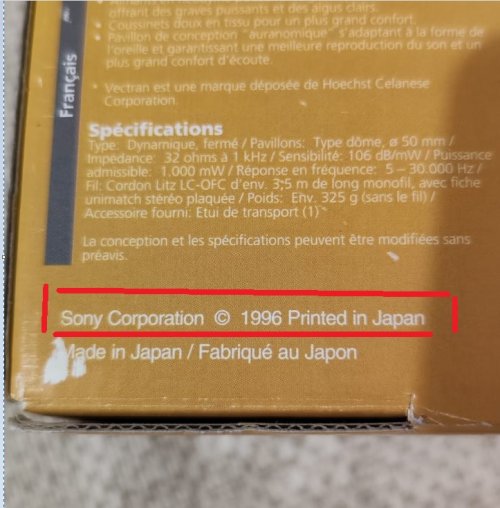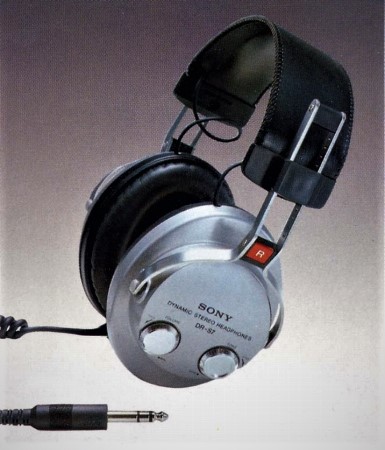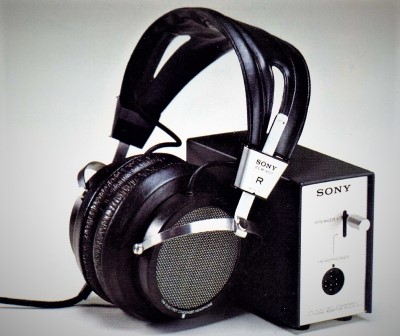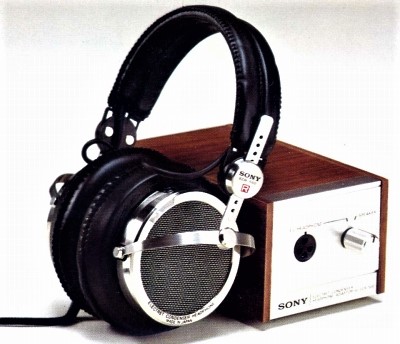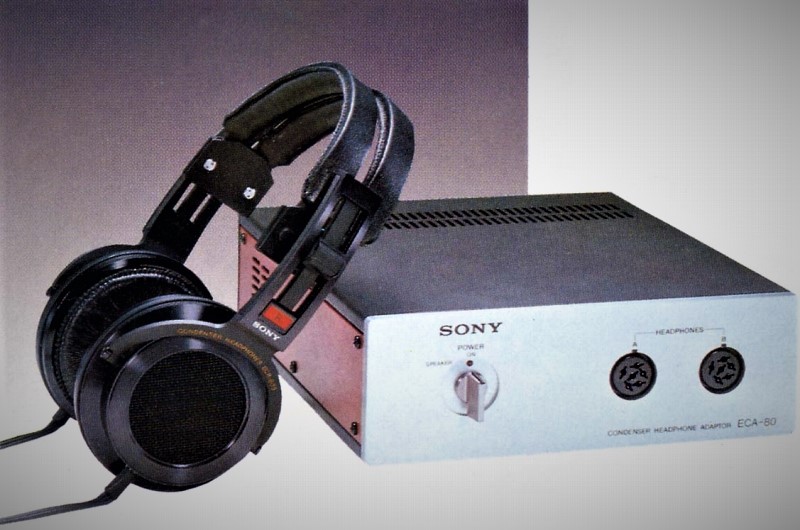protoss
Headphoneus Supremus
- Joined
- Mar 21, 2017
- Posts
- 2,500
- Likes
- 3,980
Hello audiophile enthusiast,
Today lets go back to the '90s! Why you might ask? Because Sony released their 1991 flagship headphone that year. The Sony MDR- CD3000. This headphone started everything. This was supposed to be the affordable version of the legendary MDR-R10, the baby R-10.
In France, at that time they called the CD3000 "The Prince."

■Price 50,000 yen
■Model closed dynamic type
■Vibration plate 50 mm dome type ( biocellulose diaphragm)
■Impedance 32 Ω
■Reproduction frequency band 20-20,000 Hz
■Allowable input 1,000 mW
■Sensitivity 104 dB/mW
■Code 3 m 6 NOFC Ritz wire stereo 2 way plug
■Weight 400g (excluding cord)
■Released July 1991
■End of sale
■Adopted vegetable fiber in housing material
Now we have Sony MDR-R10 as "The King" and Sony MDR-CD3000 as "The prince." Let's investigate some facts and compare the King and Prince. And see if this was truly the Baby MDR-R10
Next we will compare to Sony statement product called MDR-R10

■Price 360,000 yen
■Model Dynamic type Closed type
■Vibrator 50 mm dome type ( biocellulose diaphragm)
■Impedance 40Ω
■ Reproduction frequency band 20-20,000Hz
■Allowable input 1,000mW
■Sensitivity 100dB/mW
■Code 3m 6NLC-OFC Litz wire stereo plug (rhodium base)
■ Weight 400g (excluding code)
■ Launched December 1988
■ Discontinue 2004
■ Units # 1350
Looks pretty damn close.
Note: Even thou both headphones are exactly the same in many ways and uses the same Diaphragm, the chemistry or let's say the matrix's of it are both completely different and this is the biggest difference between the two. Same Bio-cellulose driver but different polymer and damping and compose. Also, the voice coil and magnets are different. So in the end, both headphones sound sonically different.
Introducing: Sony MDR CD3000 aka "The Baby R-10", aka "The Prince"
Sony MDR CD3000 Sound: Flat neutrality king? Maybe? Fidelity is top notch, details and highs are surely the highlights of this headphone, a little too bright for some. The biggest problem people had with this headphone was that the highs was to prominent and overshadowed other parts of the sound. The bass is okay. The sound is a little grainy on top, because of that not buttery smooth, the mids a little peaky, Soundstage is decent to Great. And this headphone hates bad recordings. It really reveals the music.
Overall, a very neutral, detail, bright, revealing headphone.
Note: Rumor is that this headphone needs to get a lot of burn-in time to get to perfection status, thats if you believein this sort of thing. Once you reach the level of burn-ins or mental burn-in, the highs calm down, neutrality smoothens, and details perfectly blend in.
Sony MDR CD3000 Design: The biggest problem with these headphones was the design, not the sound. It was a big, clumsy, flimsy, sweaty headphone. Not the most comfortable headphones but decent. Clamping is decent. The plastic feels like it's about to fall apart. And if it did fell apart it is next to impossible to fix. Because of the shortfalls of its build quality and somewhat sound quality, people began modding the CD3000.
Changing the headband, earpads, ear cups to wood, cutting holes in the cups and redoing the cables and many other things
In conclusion, the CD3000 is a flagship headphone that easily stands the test of times. It is one of the best close back headphones to ever own. The CD3000 was successful enough that it created the "CD Series".
We will continue the journey of this forgotten epic series right to the year 2000! We will dive deeply into the CD series now and figure certain things out. Let's start off with the introduction of the CD series. Now I hope you can keep up with the numbers:
3 generations
There are 3 generations of the CD-Models. Not including the CD3000.
Generation Genesis: MDR-CD3000
Generation 1: MDR- CD250 MDR-CD350 MDR-CD450 MDR-CD550 MDR-CD750 MDR-CD850 MDR- CD950 MDR-CD1000
Generation 2: MDR-CD270 MDR-CD370 MDR-CD470 MDR-CD570 MDR-CD770 MDR-CD1700
Generation 3: MDR-CD280 MDR-CD380 MDR-CD480 MDR-CD580 MDR-CD780 MDR-CD2000
Each generation had a top-tier in them. We see the CD1000, CD2000 and CD1700 as 3 awesome headphones to own and hear.
There are more CD models out there to list. Over hundreds!
Like the famous MDR-CD700, CD900ST, CD999 and so much more!
Introducing: Sony MDR CD1700

■Price: 25,000 yen
■Model: Closed dynamic type
■Vibration plate 50 mm dome type (Vectran blended biocellulose vibrating plate)
■Impedance 32 Ω
■Playback frequency band 5-30,000 Hz
■Allowable input 1,000 mW
■Sensitivity 106 dB/mW
■Code 3.5m LC -OFC CLASS1 Litz wire stereo 2-way plug
■Weight 325g (excluding cord)
■Released June 1996
■End of sale Approx. 2000
Remarks;
Some consider Sony MDR CD1700 that was release in 1996 the second best headphone Sony created next to the R10. Slightly topping the CD3000 in build and sound quality. Others think that it is the third best and the CD3000 is second best. And others considered Sony Qualia 010 the second best and the CD3000 the third best following the CD1700 and CD2000.

Sony MDR CD1700 Sound: The characteristics that these produce matches that of the MDR R10. Almost everything that could be said about the MDR R10 is 80% of these headphones. Only 80% and 20% could be directed towards a few problems.
This headphone is a musical loving type. Treble is controlled, the bass is fast, the sound is good, very neutral, Mids are decent. No coloration. The headphone is not a warm one. Almost everything could score an 8 to 9 in these headphones. The soundstage is excellent.
That being said, it can be too bright for some and too detail-oriented for others.
Overall, musical headphones. Very fun and enjoyable.
CD1700 revision 1: Same drivers as the CD3000. This is the one to own! 1996 to 1998? This version is the Holy grail!! This is the 80% MDR-R10 version
CD1700 revision 2: Different drivers. Stay away from this! 1998 ? to 2000?
CD1700 Revision 3?: 1999? Stay away
Sony MDR CD1700 Design: Build great, no issues to report! Well, the pads maybe?
And next, we have three interesting Sony headphones. The Sony CD2000, CD780 and CD580. All three models were based on Sony MDR D77 and the MDR-F1 !! What was great about the D77 was the smooth bass and being very efficient.
If you haven't seen my short piece on the Sony MDR D77 go check it out!
(Never forget the egg!)
Sony MDR CD2000
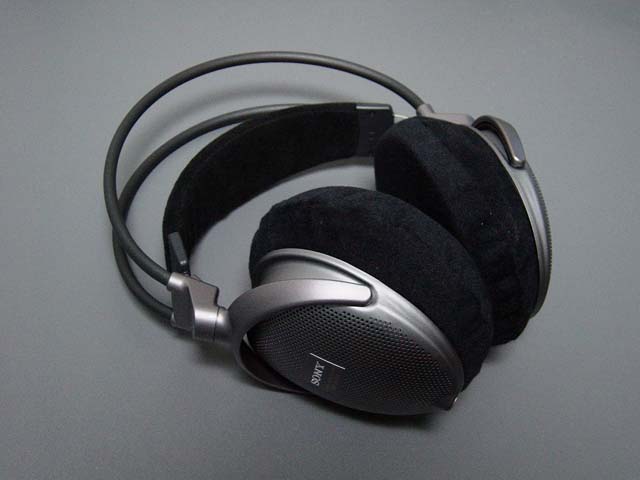
■Price 25,000 yen
■Model Closed dynamic type
■Vibration plate 50 mm dome type (Vectran blended biocellulose diaphragm)
■Impedance 32Ω
■Reproduction frequency band 5-30,000Hz
■Allowable input 1,500mW
■Sensitivity 106dB/mW
■Code 3.5m LC -OFC CLASS1 Litz wire detachable stereo 2-way plug
■Weight 300g (code not included)
■Released February 10, 2000
■Discontinued
■Remarks ABS resin housing
High magnetic force neodymium (30%up compared to conventional)
Low-repulsion urethane cushion , Washable cloth material Ear pad
sold separately Code
Yes you guess it. It is an open back!
Sony MDR CD2000 is an open back headphone . They are the last lovely pair next to the ranking of Sony's TOTL cans.
Sony MDR CD2000 sound: gentle, warm, open sounding, and little thin and stale. Smooth bass. No upper bass and no extended bass.
Sony MDR-CD1000

■Price 30,000 yen
■Model closed dynamic type
■Vibrator 50 mm dome type ( biocellulose diaphragm)
■Impedance 32 Ω
■Reproduction frequency band 20-20,000 Hz
■Allowable input 1,000 mW
■Sensitivity 104 dB/mW
■Code 3 m LC-OFC CLASS1 Litz wire stereo 2-way plug
■Weight 330g (excluding cord)
■Released October 1991
■End of sale 1994-96
Let us conclude with my opinion tier list of remarkable releases of headphones that Sony created for us to enjoy,
Sony MDR R10 was released in 1989 as a statement product
Sony MDR CD3000 was released in 1991 as a Flagship
Sony MDR-D77 was released in 1992 as a portable flagship

■ Price 18,000 yen
■ Model Closed dynamic type
■ Diaphragm 40 mm dome type (amorphous diamond diaphragm)
■ Impedance 45 Ω
■ Reproduction frequency band 5-30,000 Hz
■ Allowable input 1,000 mW
■ Sensitivity 106 dB/mW
■ Code 1.5 m LC-OFC Ritz Line Stereo L-type 2-way plug
■Weight 140g (excluding cord)
■Released November 1992
■End of sale
Sony MDR CD1700 revision 1 was release in 1996
Sony MDR-F1 released in 1997 (one of my favorite headphones of all time)

■Price 25,000 yen
■Model Full open air dynamic type
■Vibration plate 50 mm dome type
■Impedance 12Ω
■Reproduction frequency band 10-30,000Hz
■Allowable input 700mW
■Sensitivity 100dB/mW
■Code 3.5m LC-OFC Litz wire stereo 2way Plug
■Weight 200g (excluding cord)
■Released September 1997
■Discontinued
Sony MDR CD2000 released in the 2000
Sony MDR Qualia 010 released in the 2004. Sony 2nd Statement product
Sony MDR SA5000 released in 2004 was a hidden flagship
(A few other Sony headphones in between could of been listed here but there's no point we only really needed 3 to prove a point)
And currently (written in 2017)
Sony MDR Z1R release 2016 as a spiritual successor to the mighty MDR family.
Today lets go back to the '90s! Why you might ask? Because Sony released their 1991 flagship headphone that year. The Sony MDR- CD3000. This headphone started everything. This was supposed to be the affordable version of the legendary MDR-R10, the baby R-10.
In France, at that time they called the CD3000 "The Prince."

■Price 50,000 yen
■Model closed dynamic type
■Vibration plate 50 mm dome type ( biocellulose diaphragm)
■Impedance 32 Ω
■Reproduction frequency band 20-20,000 Hz
■Allowable input 1,000 mW
■Sensitivity 104 dB/mW
■Code 3 m 6 NOFC Ritz wire stereo 2 way plug
■Weight 400g (excluding cord)
■Released July 1991
■End of sale
■Adopted vegetable fiber in housing material
Now we have Sony MDR-R10 as "The King" and Sony MDR-CD3000 as "The prince." Let's investigate some facts and compare the King and Prince. And see if this was truly the Baby MDR-R10
Next we will compare to Sony statement product called MDR-R10

■Price 360,000 yen
■Model Dynamic type Closed type
■Vibrator 50 mm dome type ( biocellulose diaphragm)
■Impedance 40Ω
■ Reproduction frequency band 20-20,000Hz
■Allowable input 1,000mW
■Sensitivity 100dB/mW
■Code 3m 6NLC-OFC Litz wire stereo plug (rhodium base)
■ Weight 400g (excluding code)
■ Launched December 1988
■ Discontinue 2004
■ Units # 1350
Looks pretty damn close.
Note: Even thou both headphones are exactly the same in many ways and uses the same Diaphragm, the chemistry or let's say the matrix's of it are both completely different and this is the biggest difference between the two. Same Bio-cellulose driver but different polymer and damping and compose. Also, the voice coil and magnets are different. So in the end, both headphones sound sonically different.
Introducing: Sony MDR CD3000 aka "The Baby R-10", aka "The Prince"
Sony MDR CD3000 Sound: Flat neutrality king? Maybe? Fidelity is top notch, details and highs are surely the highlights of this headphone, a little too bright for some. The biggest problem people had with this headphone was that the highs was to prominent and overshadowed other parts of the sound. The bass is okay. The sound is a little grainy on top, because of that not buttery smooth, the mids a little peaky, Soundstage is decent to Great. And this headphone hates bad recordings. It really reveals the music.
Overall, a very neutral, detail, bright, revealing headphone.
Note: Rumor is that this headphone needs to get a lot of burn-in time to get to perfection status, thats if you believein this sort of thing. Once you reach the level of burn-ins or mental burn-in, the highs calm down, neutrality smoothens, and details perfectly blend in.
Sony MDR CD3000 Design: The biggest problem with these headphones was the design, not the sound. It was a big, clumsy, flimsy, sweaty headphone. Not the most comfortable headphones but decent. Clamping is decent. The plastic feels like it's about to fall apart. And if it did fell apart it is next to impossible to fix. Because of the shortfalls of its build quality and somewhat sound quality, people began modding the CD3000.
Changing the headband, earpads, ear cups to wood, cutting holes in the cups and redoing the cables and many other things
In conclusion, the CD3000 is a flagship headphone that easily stands the test of times. It is one of the best close back headphones to ever own. The CD3000 was successful enough that it created the "CD Series".
We will continue the journey of this forgotten epic series right to the year 2000! We will dive deeply into the CD series now and figure certain things out. Let's start off with the introduction of the CD series. Now I hope you can keep up with the numbers:
3 generations
There are 3 generations of the CD-Models. Not including the CD3000.
Generation Genesis: MDR-CD3000
Generation 1: MDR- CD250 MDR-CD350 MDR-CD450 MDR-CD550 MDR-CD750 MDR-CD850 MDR- CD950 MDR-CD1000
Generation 2: MDR-CD270 MDR-CD370 MDR-CD470 MDR-CD570 MDR-CD770 MDR-CD1700
Generation 3: MDR-CD280 MDR-CD380 MDR-CD480 MDR-CD580 MDR-CD780 MDR-CD2000
Each generation had a top-tier in them. We see the CD1000, CD2000 and CD1700 as 3 awesome headphones to own and hear.
There are more CD models out there to list. Over hundreds!
Like the famous MDR-CD700, CD900ST, CD999 and so much more!
Introducing: Sony MDR CD1700

■Price: 25,000 yen
■Model: Closed dynamic type
■Vibration plate 50 mm dome type (Vectran blended biocellulose vibrating plate)
■Impedance 32 Ω
■Playback frequency band 5-30,000 Hz
■Allowable input 1,000 mW
■Sensitivity 106 dB/mW
■Code 3.5m LC -OFC CLASS1 Litz wire stereo 2-way plug
■Weight 325g (excluding cord)
■Released June 1996
■End of sale Approx. 2000
Remarks;
Some consider Sony MDR CD1700 that was release in 1996 the second best headphone Sony created next to the R10. Slightly topping the CD3000 in build and sound quality. Others think that it is the third best and the CD3000 is second best. And others considered Sony Qualia 010 the second best and the CD3000 the third best following the CD1700 and CD2000.

Sony MDR CD1700 Sound: The characteristics that these produce matches that of the MDR R10. Almost everything that could be said about the MDR R10 is 80% of these headphones. Only 80% and 20% could be directed towards a few problems.
This headphone is a musical loving type. Treble is controlled, the bass is fast, the sound is good, very neutral, Mids are decent. No coloration. The headphone is not a warm one. Almost everything could score an 8 to 9 in these headphones. The soundstage is excellent.
That being said, it can be too bright for some and too detail-oriented for others.
Overall, musical headphones. Very fun and enjoyable.
CD1700 revision 1: Same drivers as the CD3000. This is the one to own! 1996 to 1998? This version is the Holy grail!! This is the 80% MDR-R10 version
CD1700 revision 2: Different drivers. Stay away from this! 1998 ? to 2000?
CD1700 Revision 3?: 1999? Stay away
Sony MDR CD1700 Design: Build great, no issues to report! Well, the pads maybe?
And next, we have three interesting Sony headphones. The Sony CD2000, CD780 and CD580. All three models were based on Sony MDR D77 and the MDR-F1 !! What was great about the D77 was the smooth bass and being very efficient.
If you haven't seen my short piece on the Sony MDR D77 go check it out!
(Never forget the egg!)
Sony MDR CD2000

■Price 25,000 yen
■Model Closed dynamic type
■Vibration plate 50 mm dome type (Vectran blended biocellulose diaphragm)
■Impedance 32Ω
■Reproduction frequency band 5-30,000Hz
■Allowable input 1,500mW
■Sensitivity 106dB/mW
■Code 3.5m LC -OFC CLASS1 Litz wire detachable stereo 2-way plug
■Weight 300g (code not included)
■Released February 10, 2000
■Discontinued
■Remarks ABS resin housing
High magnetic force neodymium (30%up compared to conventional)
Low-repulsion urethane cushion , Washable cloth material Ear pad
sold separately Code
Yes you guess it. It is an open back!
Sony MDR CD2000 is an open back headphone . They are the last lovely pair next to the ranking of Sony's TOTL cans.
Sony MDR CD2000 sound: gentle, warm, open sounding, and little thin and stale. Smooth bass. No upper bass and no extended bass.
Sony MDR-CD1000

■Price 30,000 yen
■Model closed dynamic type
■Vibrator 50 mm dome type ( biocellulose diaphragm)
■Impedance 32 Ω
■Reproduction frequency band 20-20,000 Hz
■Allowable input 1,000 mW
■Sensitivity 104 dB/mW
■Code 3 m LC-OFC CLASS1 Litz wire stereo 2-way plug
■Weight 330g (excluding cord)
■Released October 1991
■End of sale 1994-96
Let us conclude with my opinion tier list of remarkable releases of headphones that Sony created for us to enjoy,
Sony MDR R10 was released in 1989 as a statement product
Sony MDR CD3000 was released in 1991 as a Flagship
Sony MDR-D77 was released in 1992 as a portable flagship

■ Price 18,000 yen
■ Model Closed dynamic type
■ Diaphragm 40 mm dome type (amorphous diamond diaphragm)
■ Impedance 45 Ω
■ Reproduction frequency band 5-30,000 Hz
■ Allowable input 1,000 mW
■ Sensitivity 106 dB/mW
■ Code 1.5 m LC-OFC Ritz Line Stereo L-type 2-way plug
■Weight 140g (excluding cord)
■Released November 1992
■End of sale
Sony MDR CD1700 revision 1 was release in 1996
Sony MDR-F1 released in 1997 (one of my favorite headphones of all time)

■Price 25,000 yen
■Model Full open air dynamic type
■Vibration plate 50 mm dome type
■Impedance 12Ω
■Reproduction frequency band 10-30,000Hz
■Allowable input 700mW
■Sensitivity 100dB/mW
■Code 3.5m LC-OFC Litz wire stereo 2way Plug
■Weight 200g (excluding cord)
■Released September 1997
■Discontinued
Sony MDR CD2000 released in the 2000
Sony MDR Qualia 010 released in the 2004. Sony 2nd Statement product
Sony MDR SA5000 released in 2004 was a hidden flagship
(A few other Sony headphones in between could of been listed here but there's no point we only really needed 3 to prove a point)
And currently (written in 2017)
Sony MDR Z1R release 2016 as a spiritual successor to the mighty MDR family.
Last edited:

